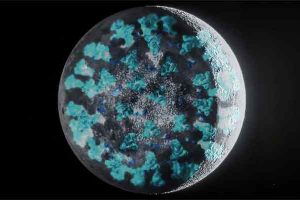
bdmetronews Desk ॥ Two Florida python hunters caught the longest Burmese python ever captured in Florida. The female measured 18.9 feet, beating the state’s previous record for length of 18.8 feet.
Ryan Ausburn and Kevin Pavlidis were out looking for pythons in the Everglades last week when they spotted a snake’s tail sticking out of the marshes near a levy that’s only accessible to licensed python contractors and water management district workers.
Working together as part of the joint python elimination program that’s funded by the state, they saw that the head was deep in three to four feet of water, so Ausburn decided to catch it by the tail. It quickly turned around, thrashing violently until Pavlidis was able to grab and secure its head, according to a video shot by Angela Scafuro, who was helping the pair that night.
“On Friday night we pulled this BEAST of a snake out of waist-deep water in the middle of the night, deep in the Everglades. I have never seen a snake anywhere near this size and my hands were shaking as I approached her,” Pavlidis wrote on his Facebook page.
Ausburn, who makes a living catching pythons and making products with the skins, said he has probably captured a couple hundred snakes since joining the Water Management District python elimination program a couple of years ago. He was hired last year to make footballs made of python skin for the Miami Super Bowl.
This was his toughest capture yet, he said.
“It took every ounce of my strength to catch that snake,” he said. “I would normally never catch a python by the rear but in this case Kevin was there and was able to get her head once she realized what was happening.”
Ausburn and Pavlidis said they are paid snake hunters working for the South Florida Water Management District and the Florida Fish and Wildlife Conservation Commission, which manage Florida’s python elimination programs.
The invasive snakes are among the biggest threats to the fragile Everglades ecosystem, devouring mammals and bird eggs and disrupting the natural balance of predator and prey. Scientists don’t know exactly how many live in the marshes and tree islands, but some estimates point to between 100,000 and 300,000 snakes.






